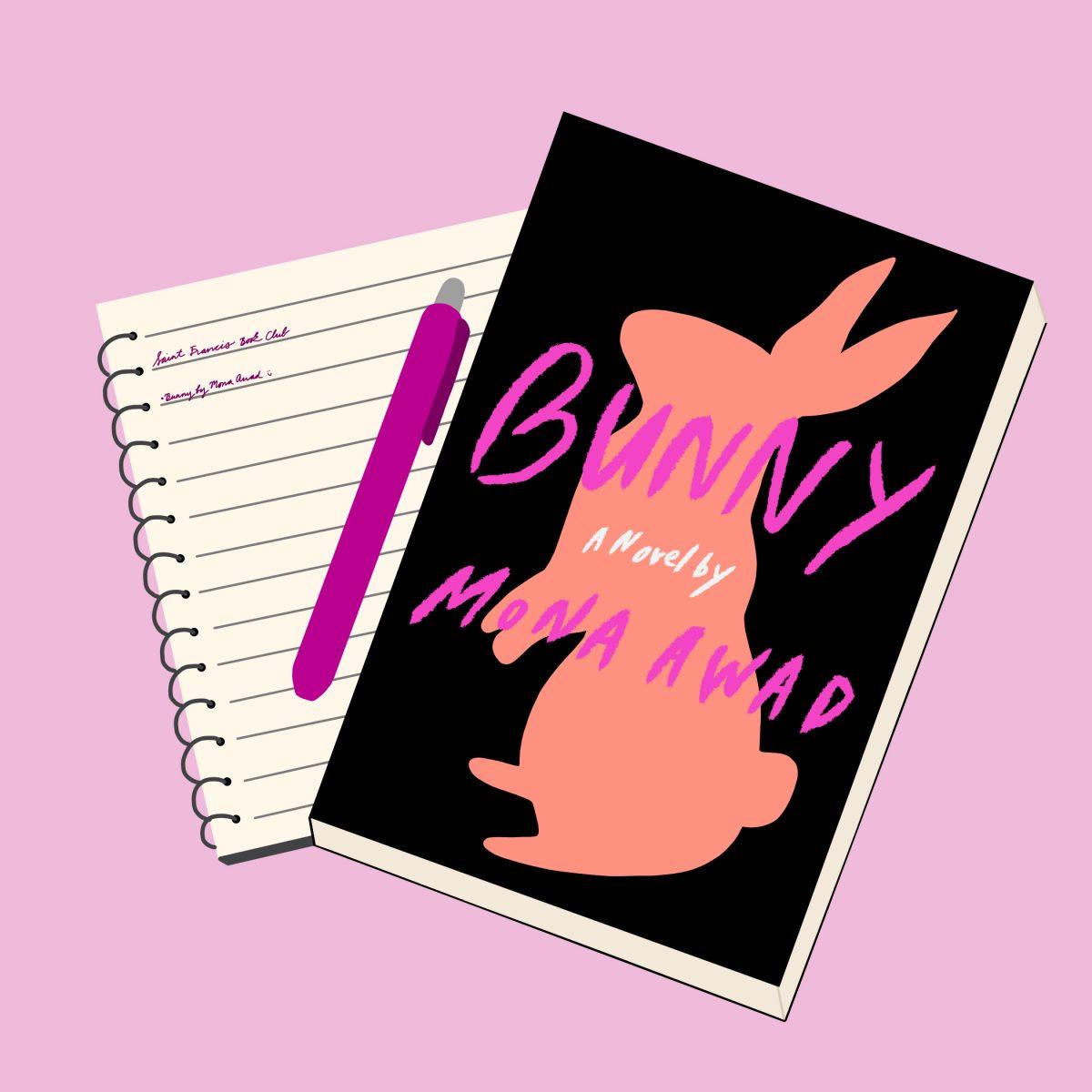In light of Halloween, Saint Francis’s Book Club picked Bunny by Mona Awad to read and discuss in October. Bunny is narrated by college student Samantha Mackey, who believes herself to be the classic outsider amidst her fellow classmates. These classmates are a group of wealthy girls who call each other “Bunny,” a quirk Samantha and her only friend, Ava, often ridicule. However, after a turn of events, Samantha finds herself a member of this elite circle, changing her perspective on the world and the people around her. Through her darker world building, Awad pens an intense but lovable story about belonging, desire, and imagination.
From the very first page, the prose is beautiful and carefully crafted. Although there are times at which the narrator’s actions contradict her attitudes, the novel’s magical realism make up for these instances and allow for extremely vivid moments. Vibrant imagery is prevalent throughout each chapter, adding to the immersive experience. An incredibly poignant aspect of the novel is its ability to inject underlying emotion into every scene; there is always a unique sense of uneasiness when reading. As a result, the process of reading the novel is all the more exciting and emotional. Laying down impeccable groundwork for what is to come, Awad clearly sets up for a dark story from the beginning. Each little detail holds significance, and it is impossible not to appreciate and award Awad for such incredible storytelling.
Book Club members enjoyed the imagery seen throughout the novel—Niko Karmirantzos (’24) said that he enjoyed how well the book allowed for “people to see what was being portrayed.” The imagery Awad uses throughout the entire novel supports the “amazingly done” representation of themes and symbolism. Similarly, Semira Arora (’25) said that “there were good descriptions of the characters, specifically the Bunnies.” For example, the nicknames that the narrator uses to describe her peers match their attitudes and thoughts, as well as their clothing.
However, Book Club members noted that there were aspects of the novel that made it less enjoyable to read. Karmirantzos did not like the pacing, and stated that “it took a little too long for the story to begin.” Arora described the majority of the book as a “long complaint session,” as the narrator’s thoughts were never resolved through actions until later on. Because of this, Arora said that, “by the end, it didn’t feel like the characters had gone through many changes.” The “naive” actions of the college-aged characters never seem to meet their end throughout Bunny in the “youthful revenge and drama.”
Another notable aspect of the novel that receives contrasting opinions from readers is the sexualization of its characters. Although Simonne Victor (’24) said that the book mainly made her “really scared” of sexual encounters, as it used elaborate descriptions of horrific interactions, Arora believed that it added to the importance of being a Bunny, tying the novel together in a “good, weird way.”
Overall, Bunny gives its readers the conflict that a good novel elicits. For readers who enjoy imagery that chillingly brings scenes to life, this book could be just the right fit for a spooky season read. Additionally, Bunny fits into the increasingly common genre of dark academia and uses its setting to dramatically comment on social classes within education, so for those searching for a dark academia novel, this may be the perfect book to read next.







































































